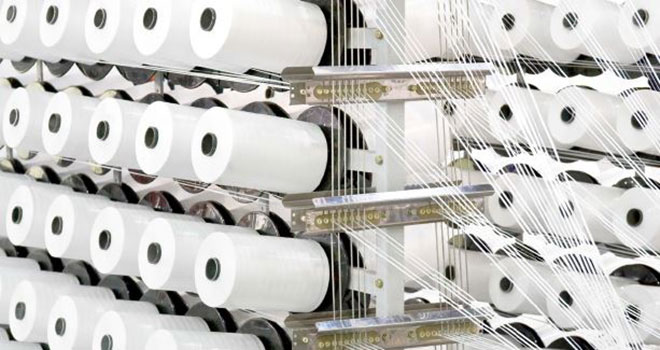 Positive estimates (Q2/2015) and outlook (Q3/2015) for global yarn and fabric
Positive estimates (Q2/2015) and outlook (Q3/2015) for global yarn and fabric
output. Estimates for yarn production for Q2/2015 are positive in Asia and in Europe.
The same pattern applies to the estimates for the fabric production for Q2/2015.
Global yarn production fell in Q1/2015 compared
to the previous quarter. Thereby, yarn output
in Asia and in Europe fell, while it increased
in North America. On an annual basis, the
global yarn production decreased the second
quarter in a row. Declines were strongest in Asia
and Europe, while North America saw a modest
increase. Worldwide yarn stocks rose in Q1/2015
in comparison to Q4/2014. Thereby, yarn stocksnein
Asia were increased, while European stocks
were reduced. Year-on-year, global yarn stocks
increased. Yarn orders in Europe decreased in
Q1/2015 compared to the previous quarter and
also on a year-on-year basis. Global fabric production
fell in Q1/2015 compared to the previous
quarter. Thereby, fabric output fell strongest in
Asia and in Europe. It has to be pointed out that
Asia’s production is usually significantly lower in
the first quarter compared to the fourth quarter
of the previous year. The reason for that is that
due to Chinese New Year holidays, which traditionally
are around the end of January, China has
less working days in the first quarter than during
the rest of the year. Compared to Q1/2014 the
global fabric production remained unchanged.
While Asia’s fabric output climbed, European
output fell. World fabric stocks were increased
quarter-on-quarter in Q1/2015 due to a strong
rise of European stocks. Stocks in Asia and North
America were increased moderately. Year-onyear,
the picture was mixed with increases in
Asia and North America and decreases in Europe.
Overall, global fabric inventories rose annually.
Fabric orders in Q1/2015 showed a strong
increase in Europe. The outlook for yarn and
fabric production for Q3/2015 is positive for Asia.
For Europe the outlook hints at an unchanged
development of output. In Q1/2015, global yarn
production fell by 15% quarter-on-quarter after
a decline of 29% in Q4/2014. The reason for the
strong decline were exceptionally weak figures
from Asia. Asian yarn production fell by 16%
quarter-on-quarter. Output in Europe declined
by nearly 10%, while in North America it rose
by 4.4%. In comparison to Q1/2014 worldwide
yarn production fell by nearly 31%. Thereby, in
Asia output fell by 33%. In Europe, yarn output
decreased by 13%, while it climbed moderately
by 1% in North America. Global fabric production
decreased by 11% in Q1/2015 compared to
the previous quarter. Strong declines of 12% and
5% were recorded in Asia and Europe respectively.
Year-on-year, global fabric output remained
unchanged. Thereby, Asian production
climbed by 1.5%, while European output fell by
7.8%. Global yarn inventories were increased by
nearly 4% in Q1/2015 quarter-on-quarter. Thereby,
European inventories fell by 3.6%. On an annual
basis, global yarn inventories fell by 3.6%
due to a strong reduction in Europe (5%). In Asia
yarn stocks rose by 5%. Worldwide fabric stocks
rose by 0.3% in Q1/2015 compared to Q4/2014.
Stocks in Asia, Europe, and North America were
increased by 0.3%, 2.2%, and 0.4% respectively.
Global fabric inventories in Q1/2015 climbed by
0.5% year-on-year. While fabric stocks were increased
by 0.8% in Asia and 0.7% in North America,
they fell by 0.9% in Europe. In Q1/2015, European
yarn orders fell by 2.4% quarter-on-quarter
and by 5% year-on-year. European fabric orders
in Q1/2015 climbed by 2.9% quarter-on-quarter
and by 0.2% year-on-year.










